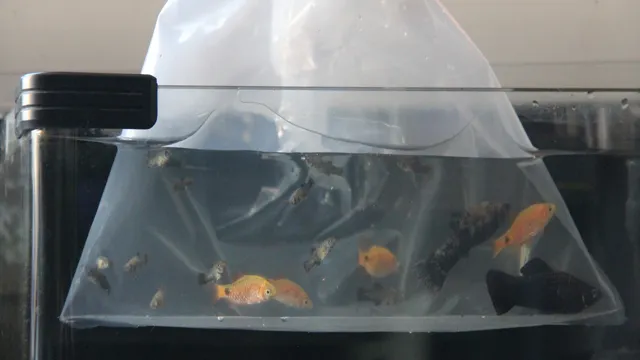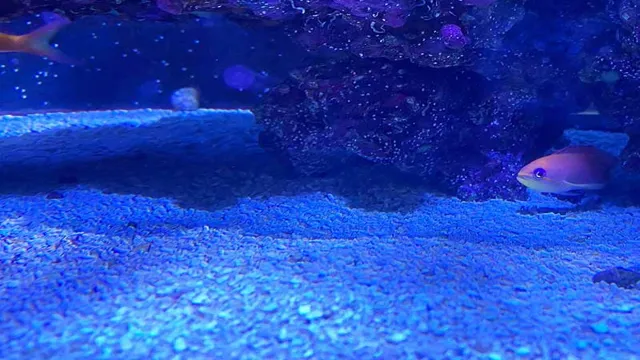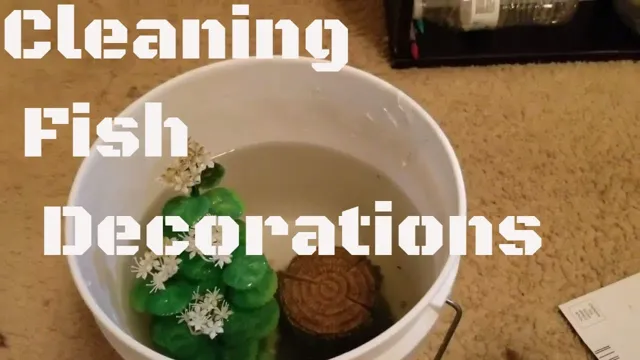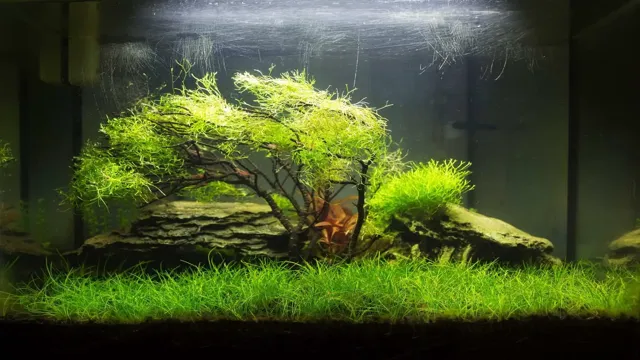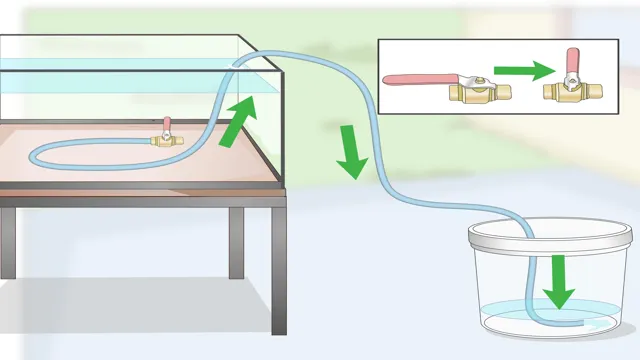Are you excited to bring new fish home to your aquarium? Before you introduce them to their new environment, it’s important to acclimate them properly to ensure their health and happiness. Just like humans, fish need time to adjust to changes in their surroundings. Failure to acclimate them can cause stress, sickness, and even death.
The process of acclimation involves gradually introducing your fish to the new water conditions in your aquarium, allowing them to adjust to changes in temperature, water chemistry, and pH levels. It’s crucial to take your time and be patient throughout the process to ensure successful acclimation. In this article, we’ll provide you with step-by-step instructions on how to properly acclimate your fish to their new home.
We’ll also cover some common mistakes to avoid and tips to ensure a smooth transition. Trust us; your new fish will thank you for taking the time to acclimate them properly. Let’s get started!
Preparation
Acclimating new fish to your aquarium is an essential and delicate process. You must prepare your tank environment for the new additions before introducing them. Ensure that the water quality and temperature match the fish’s natural habitat, ensuring a comfortable transition.
Take the time to research the type of fish you plan to add to your tank. Different species have specific needs, including feeding habits, social behavior, and environment, which you must replicate to reduce stress and increase chances of survival. To make the transition smoother, acclimate your fish over time to the new water conditions.
Avoid sudden and aggressive temperature or water changes. Instead, gradually introduce the fish to the aquarium environment. This nurturing approach has proven successful in reducing fish shock and mortality rates.
Don’t forget to monitor your new fish for signs of stress or health issues. Overall, acclimating new fish into your aquarium requires adequate preparation, patience, and attention to detail.
Test Water
When it comes to testing water, there are some important steps that need to be taken to ensure accurate results. First and foremost, it is crucial to prepare properly by gathering all necessary materials such as test strips, testing kits, and a clean container to collect the water sample. Once you have your materials, you will need to determine what parameters you want to test for, whether it be pH levels, chlorine or bacteria presence, or other contaminants.
It is important to follow the instructions provided with your testing materials to ensure the most accurate results possible. One essential step in preparing for water testing is to research the specific testing procedure you plan to use to ensure you are familiar with the process. For example, some test strips may require you to swirl the sample after collection, while others may require you to dip the strip in the water for a certain amount of time.
Additionally, some tests may require you to wait a specific amount of time before reading the results. Overall, taking the necessary preparation steps before testing water is crucial to obtaining accurate results. By gathering all necessary materials and familiarizing yourself with the testing procedure, you can ensure that your testing is both efficient and effective in determining the safety and quality of your water.
So, next time you plan to test your water, take the time to properly prepare and ensure accurate results.
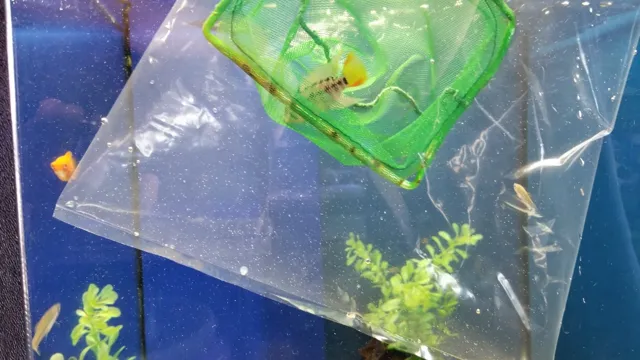
Temperature Adjustment
Preparing to adjust the temperature in your living space is important to ensure you achieve maximum comfort. Start by identifying the areas that need adjustment depending on the time of day or season. This will help you determine which devices to use, whether it’s an air conditioner, fan or heater, and where to position them.
Additionally, check if there are any windows or doors that need sealing to maintain a constant temperature. Once you have a plan in place, you can set your devices to the desired temperature and enjoy a comfortable living environment. However, remember to monitor your energy consumption to ensure you’re not overworking your devices and causing unnecessary energy waste.
By preparing and being mindful of your energy use, you can create a healthy, comfortable living environment while also being environmentally conscious.
Drip Acclimation Method
If you’re introducing new fish to your aquarium, it’s important to acclimate them slowly to avoid shocking their systems. One of the best ways to do this is with the drip acclimation method. This involves slowly dripping water from your aquarium into the container holding the new fish, gradually increasing the water volume and allowing the fish time to adjust to the new environment. (See Also: How to Attach a Hamster Water Bottle to an Aquarium: Step-by-Step Guide)
The process can take anywhere from 20 minutes to a few hours depending on the fish and the volume of water. This method is much gentler than simply dumping the fish into the tank and greatly reduces the chances of stress, illness or even death. Remember to monitor the water temperature, pH levels, and salinity throughout the acclimation process to ensure a smooth transition for your new aquatic additions.
By following these steps, you’ll ensure that your new fish are healthy and happy in their new home.
Gather Supplies
The Drip Acclimation Method is an excellent way to introduce new fish to your aquarium without shocking them. To start, you’ll need a clean bucket to hold the water. Next, you’ll need an airline tube and an air pump.
You’ll also need a valve to control the drip rate and a thermometer to monitor the temperature. Start by filling the bucket with water from your aquarium and placing the airline tube in it. You can attach a valve to the other end of the airline tube to control the drip rate.
Adjust the flow rate, so the water drips at a rate of about two to four drips per second. The process can take anywhere from half an hour to a few hours depending on the size of your fish and how sensitive they are to changes in water chemistry. During this time, be sure to monitor the water temperature and adjust it as needed.
Once the bucket is full, you can transfer the fish to the tank using a fish net. The Drip Acclimation Method is a tried-and-true method that has been used by aquarists for years and is an essential part of successfully adding new fish to your aquarium.
Float the Bag
Float the Bag Drip acclimation is an essential step in the process of introducing new fish into your aquarium. The float the bag method is a popular method to use during drip acclimation. To use this method, simply place the fish bag in your aquarium and allow it to float for about 15-20 minutes.
This will allow the temperature of the water inside the bag to adjust to the temperature of your aquarium. Next, add a cup of aquarium water into the bag every 5-10 minutes to gradually acclimate the fish to your tank’s water conditions. The drip acclimation process can take up to an hour, and it’s important to monitor the chemistry levels throughout the process to ensure that the fish are safely adjusting.
This method is great for new aquarium owners, as it’s easy to do and is less stressful for the fish. So, if you want to ensure the health and safety of your new underwater friends, give the float the bag method a try!
Begin Drip Acclimation
Drip Acclimation is a widely used method of acclimating fish or other aquatic pets to their new environment. It involves introducing them to the new tank gradually by slowly adding water from the new tank into the container they are in. This allows the fish to get used to the water conditions in the new tank without experiencing any sudden changes in water chemistry or temperature.
The drip acclimation method takes several hours to complete and requires patience and attention to detail. It is important to ensure that the water parameters in the new tank are consistent with those in the container before introducing the fish. Using a drip acclimation method can greatly reduce the stress on your aquatic pet and increase their chances of survival in their new environment.
So, if you’re planning an aquarium, using the drip acclimation method is the way to go.
Bucket Acclimation Method
Acclimating fish to a new aquarium is an important step that should not be overlooked if you want to prevent stress and disease in your fish. The bucket acclimation method is a popular and effective way to introduce fish to a new aquarium. To start, fill a clean, new bucket with water from the aquarium where the fish currently reside, making sure you don’t use any soap or detergents that could harm your fish.
Then, float the bucket with the fish in it on top of the water in the new aquarium for 10-15 minutes. This will allow the water temperatures to equalize, reducing the shock for the fish. Next, slowly start adding small amounts of water from the new aquarium to the bucket every 10 minutes, until the bucket is filled with mostly water from the new aquarium. (See Also: How to Keep Potted Aquarium Plants Thriving: Tips and Tricks)
Then you can carefully release your fish into their new home. By using this method, you can acclimate your fish slowly, reducing stress and promoting a healthy and happy environment for them.
Gather Supplies
When it comes to setting up an aquarium, one of the most important steps is acclimating your new fish to their new environment. One common and effective way to do this is the bucket acclimation method. To begin, gather a clean bucket and make sure it has been rinsed thoroughly with no soap or residue left behind.
Next, fill the bucket with water from your aquarium. This will help the temperature of the water in the bucket to match the temperature of the water in your tank, making the transition less stressful for your fish. After that, it’s time to start the acclimation process by gradually adding small amounts of water from your aquarium into the bucket over a period of time.
This allows your new fish to slowly adjust to the conditions in the aquarium and reduces the risk of shock. Once the water levels in the bucket and the tank are equal, it’s safe to release your new fish into their new home. The bucket acclimation method is a simple and effective way to ensure your new fish have a smooth and stress-free transition into their new aquarium.
Float the Bag
When it comes to introducing new fish or invertebrates into an established aquarium, acclimation is critical for their survival. One popular method for acclimation is known as the “Float the Bag” or “Bucket Method.” It’s a simple but effective method that involves floating the bag containing your new aquatic pet in the aquarium for around 20-30 minutes.
The purpose of this method is to allow the water inside the bag to gradually reach the same temperature as the water in the aquarium. The temperature should be within a degree or two before opening the bag and letting your new pet swim free. This method also allows the fish or invertebrates to adjust to the water chemistry differences.
It’s important to note that while the float the bag method is effective, it’s not a guarantee for the success of acclimating your aquatic pets. Factors like pH, salinity, and water hardness can differ drastically between the water in the bag and the aquarium. Moving too quickly can be overwhelming for your pets, so it’s best to take your time when introducing them.
Once their safe and healthy inside the tank, you can begin to enjoy their company and watch as they explore their new home. With patience and care, the Float the Bag method can be a simple but effective way to add new aquatic life to your aquarium.
Begin Bucket Acclimation
Bucket acclimation is a crucial step when introducing a new fish to your aquarium. This method involves slowly acclimating the fish to the water conditions in your tank, so they can gradually adjust to the differences in temperature, pH, and other factors. The easiest way to do this is to use a clean bucket or container of a suitable size, which is filled with water from your aquarium.
Firstly, you need to float the fish and its bag in the bucket for about 10 to 15 minutes. This helps the fish to adjust to the bucket’s temperature. Then, you should add a small amount of water from your aquarium to the bucket every 10 to 15 minutes, until the bucket is full.
By doing this, you are helping the fish to slowly adjust to the water conditions in your aquarium. Once the bucket is full, you can gently release the fish into your aquarium. This method is suitable for most types of fish and ensures a safe and stress-free introduction of your new aquatic pet into its new home.
Tips and Tricks
If you’re getting a new aquarium and plan to introduce new fish, it’s important to acclimate them properly to their new habitat. Sudden temperature or water quality changes can cause stress and even death to fish. The acclimation process can take anywhere from 15 minutes to several hours depending on the size and species of fish.
To begin, float the bag containing the fish in the aquarium for 15 minutes to allow for temperature equalization. After 15 minutes, open the bag and add small amounts of aquarium water to the bag every few minutes until the bag is full. This will acclimate the fish to the water parameters of the new aquarium. (See Also: How to Lower Calcium Levels in Aquarium: Effective Ways to Reduce Calcium Buildup)
Gently release the fish into their new environment and observe their behavior over the next few hours. It’s also important to monitor water quality for the first few weeks to ensure the fish are not negatively impacted. By following these steps, you can successfully acclimate your new fish to their new home and ensure their health.
Conclusion
In conclusion, acclimating fish to a new aquarium is a delicate process that requires patience and attention to detail. Remember, fish are creatures of habit, and sudden changes in water temperature, pH levels, and overall environment can cause them undue stress and discomfort. By taking the time to acclimate your fish properly, you’ll be giving them the best chance to thrive in their new home.
And who knows, with a little luck and TLC, your fish may even surprise you with a fin-tastic rendition of “Under the Sea”! Just don’t expect them to be great swimmers…
they’re probably tone-deaf too.”
FAQs
Why is it important to acclimate fish to a new aquarium?
Acclimating fish helps them adjust to changes in temperature, water chemistry and other conditions in the aquarium, reducing stress and improving their chances of survival.
How long should I acclimate fish to a new aquarium?
It is generally recommended to acclimate fish for at least 30 minutes, gradually adding small amounts of the new water to the container holding the fish.
What is the drip acclimation method?
The drip acclimation method involves slowly introducing new aquarium water to the container holding the fish using a drip line. This can take anywhere from 1-3 hours, depending on the volume of water being acclimated.
Can I acclimate fish using the float method?
Yes, the float method involves floating the bag containing the fish in the aquarium water for 15-20 minutes before slowly adding the new water to the bag. This method can be effective for short acclimation periods, but may not be suitable for all species.
How can I prevent shock during acclimation?
To prevent shock, ensure that the water temperature and pH in the container holding the fish matches that of the aquarium water they will be introduced to. Additionally, avoid exposing the fish to sudden changes in water conditions, such as rapid changes in temperature or salinity.
What should I do if my fish appear stressed after acclimation?
If your fish appear stressed after acclimation, give them time to adjust. Ensure that water conditions are optimal and monitor their behavior for signs of illness or injury.
Can acclimating new fish affect the existing fish in my aquarium?
It is possible for new fish to introduce diseases or parasites to an existing aquarium, so it is important to quarantine new fish before introducing them to your main aquarium. Additionally, acclimation can cause stress in both new and existing fish, so it is important to monitor their behavior and adjust water conditions as needed.

